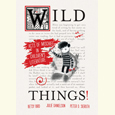She Found Ways to Be Fascinating
Natalie Standiford’s Astrid Sees All charts the course of a young friendship in early 1980s New York City
During an uneasy second date with a much older, probably married man, Phoebe Hayes — the narrator of Natalie Standiford’s novel Astrid Sees All — cringes at how provincial and insignificant she must look to the sophisticated New Yorkers all around her: “I desperately wanted beautiful new clothes, ones like the blonde at the opera had worn. Clothes that said, My rightful place is at the center of this story.”

There’s a particular spell that can only be cast over someone’s life by the insular motivations, half-logic, and self-consciousness of being both very young and very willing to throw one’s body into the path of romantic destiny. To follow Phoebe into her story is to enter the world of that perilous magic.
A daughter of suburban privilege, Phoebe longs for jolting experience and validation from an intoxicating college friend named Carmen. For Phoebe, Carmen represents the kind of jaded insouciance that Phoebe imagines to be the ideal of a young artist’s life. “She had the seen-it-all attitude of a native New Yorker, and I wanted to see it all.”
Carmen, too, is a daughter of privilege, but of a considerably more glamorous kind. The daughter of successful artists, Carmen’s idea of creative rebellion has led her down a far darker path than Phoebe understands. Still, in every decision that matters, Phoebe considers: “What would she think, what would she do in my place, would this attract or repel her.”
Phoebe tells us up front that Carmen’s sway over her is complex. “She wasn’t the most beautiful or most glamorous person I knew, but that was why I emulated her: she found ways to be fascinating without relying on those easy tactics.” The crux of Carmen’s appeal lies in the unique nature and impact of her love. “Once she loved you, you couldn’t shake her. But you couldn’t earn your way into her heart either. So if she loved you, it made you a kind of royalty.”
 Carmen leads the way, at first bringing Phoebe into a shimmering atmosphere of Gatsby-themed parties and the casual presence of genuine celebrities. But Carmen also leads Phoebe into the sub-world of romanticized squalor in New York during the early 1980s. Phoebe witnesses Carmen’s devotion to a heroin-addicted songwriter named Atti (short for “Attila”). This doomed love sets Phoebe up for a series of her own involvements with men, which become pivotal but heartbreaking.
Carmen leads the way, at first bringing Phoebe into a shimmering atmosphere of Gatsby-themed parties and the casual presence of genuine celebrities. But Carmen also leads Phoebe into the sub-world of romanticized squalor in New York during the early 1980s. Phoebe witnesses Carmen’s devotion to a heroin-addicted songwriter named Atti (short for “Attila”). This doomed love sets Phoebe up for a series of her own involvements with men, which become pivotal but heartbreaking.
Back home in her native Baltimore, Phoebe’s family life has piled up with grief and conflict, rather than suburban dullness. The sudden, shattering loss of her father propels her toward the escape that Carmen offers. Together, they decide to cut ties to their families and crash land into their urban dream of possibility and freedom.
The New York depicted in this book has been enshrined for decades in myth and legend by musicians, artists, and writers. When Phoebe and Carmen luck into an apartment suddenly vacant through Carmen’s boyfriend’s drug dealer’s arrest, they set up house amid the world of Lou Reed songs and Patti Smith’s masterful memoir Just Kids.
Phoebe gulps down as much experience of the city as possible. She observes SoHo at midday, its “cobblestone streets and unmarked doors, strangely quiet yet humming with the energy of a hidden world.” She walks the desolate midnight streets around Tompkins Square Park, where shadowy men may or may not be following her. She enters the decadent club scene, epitomized by a coked-up, celebrity-brimming hotspot called Plutonium.
At this club, Phoebe lands a gig as a fortune teller under her brand-new incarnation, Astrid. With this alias, Phoebe gains a kind of cover under which she can construct — for good or ill — a new self-myth. As the consequences of their choices add up, Phoebe and Carmen reach a crossroads in their friendship that will hurtle them both into darkness.
The friendship depicted in Astrid Sees All may be fraught and inconstant, but the novel itself provides amenable companionship. Astrid is Standiford’s first novel for adults, after numerous books for children and teen readers. Perhaps that background may explain how Astrid manages to maintain a tone of goodhearted openness, even as the events in Phoebe’s world turn darker and more dangerous.
Regardless, Standiford creates an unusually hopeful path through this kind of grim subject matter. Readers who are drawn to Astrid Sees All because they enjoy reveling in the bygone drama and squalor of this storied era in New York’s history will likely find both familiarity and gentle surprise.

Emily Choate is the fiction editor of Peauxdunque Review and holds an M.F.A. from Sarah Lawrence College. Her fiction and nonfiction have appeared in Mississippi Review, Shenandoah, The Florida Review, Atticus Review, Tupelo Quarterly, Bayou Magazine Online, Late Night Library, and elsewhere. She lives near Nashville, where she’s working on a novel.


